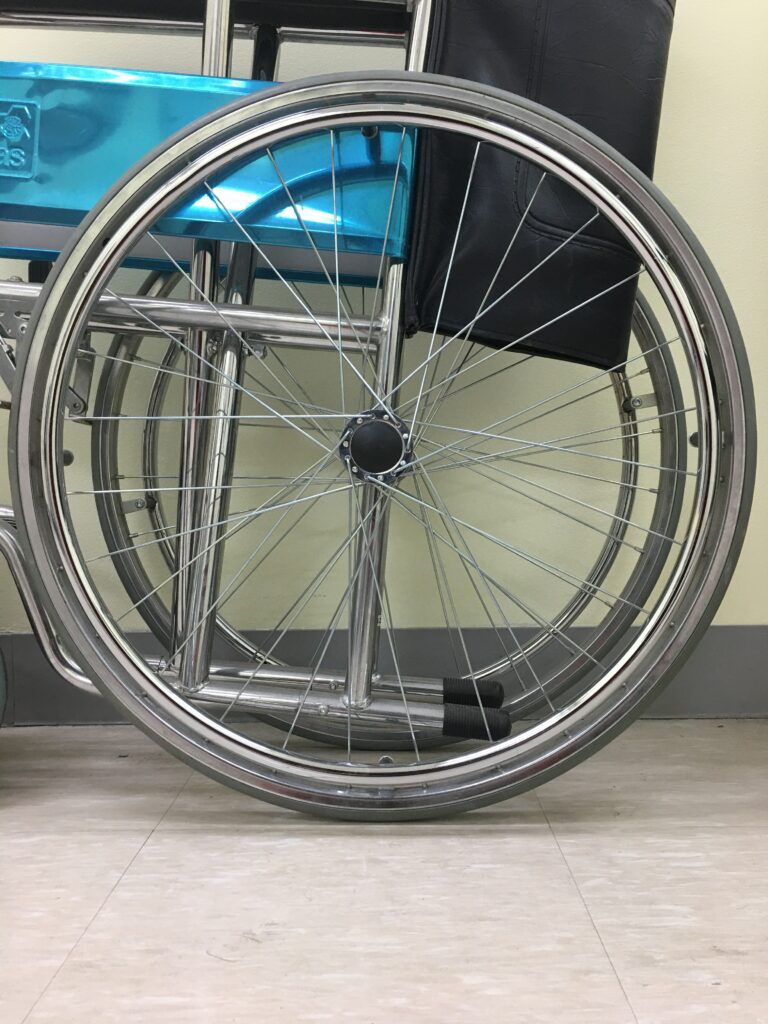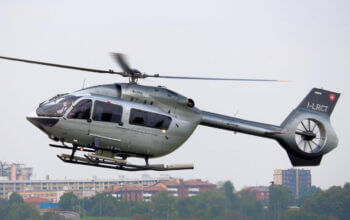Estimated reading time 8 minutes, 32 seconds.
“Hopping on a plane” isn’t so easy when you rely on a mobility aid or assistive device.
In fact, traveling by air is one of the least accessible modes of transportation by today’s standards. While buses and trains have been adapted to accommodate passengers in wheelchairs, the aviation industry has lagged behind.
“Even now, to present day, a disabled passenger has to be transferred from their own wheelchair into a boarding chair that is designed to wheel down the aisle of the aircraft,” explained Nigel Waterhouse, an aerospace engineer who is president of Can-Am Aerospace in Montreal. “Once at their row, they are transferred from that chair into their actual seat.”
According to Waterhouse, that’s where problems can start. Years ago, he was traveling on a Dash 8 turboprop when he witnessed crewmembers trying to situate a disabled passenger in his seat.

“Depending on the aircraft, there is a lack of maneuvering room,” he said. “This gentleman had fused knee joints and was unable to bend his legs. It was like shoehorning him into the seat. He was crying out in agony as they were trying to get his legs under the seat in front of him.”
Not only was the process painful, but the transfer was humiliating for the passenger and uncomfortable for everyone involved. Waterhouse believes many people in wheelchairs avoid flying for such reasons – not to mention they are worried about their expensive mobility equipment being damaged in the cargo hold below.
“I never forgot that incident,” he said. “From that point on, I started looking at how to avoid a public transfer on board the aircraft. My initial concept was for a wheelchair that was designed to be installed in the plane. The passenger could be transferred into this chair before boarding, and then it could be wheeled on and locked into place.”
Waterhouse realized his idea would necessitate a dedicated tie-down spot for this kind of chair – likely at the front or rear near a main exit door – meaning airlines would potentially lose a revenue seat while incurring the cost of system installation.
“I did a lot of research on disabled passengers and their rights, maybe 20-plus years ago,” he said. “There was a reluctance to consider solutions then. Airlines don’t spend money on their aircraft unless mandated by government or there is a direct payback.”
Waterhouse’s company, Can-Am Aerospace, specializes in engineering solutions for the aviation industry. Founded in 2001, it works with airlines, business jet operators, private owners, governments, and aircraft manufacturers to design, analyze, test, and certify new answers to common problems.
He said any airline accessibility solution would come through a supplemental type certificate (STC) process, whereby a proposed structural modification would need to be thoroughly tested. Waterhouse is a strong proponent for the development of such a solution, and has broached the idea with Transport Canada several times.

In fact, he’s hoping to get the Canadian regulator interested in attending a working group meeting on Sept. 21 to 22 at Seattle’s Museum of Flight. Hosted by All Wheels Up, a group dedicated to making air travel fully accessible for passengers in wheelchairs, the event will bring together stakeholders to discuss research, innovation, and design relating to in-cabin wheelchair securement systems.
The working group follows a process begun by the U.S. Access Board, which commissioned the Transportation Research Board (TRB) to conduct a preliminary report on the feasibility of wheelchair securement systems for commercial aircraft. On Sept. 22, 2021, the Access Board presented a public briefing to summarize its findings.
The 2021 report did not identify any design or engineering challenges that would prevent an in-cabin wheelchair securement system. The TRB recommended further investigation by the U.S. Department of Transportation and the Federal Aviation Administration (FAA), in collaboration with other industry partners, to test and evaluate several wheelchairs in accordance with FAA crashworthiness and safety thresholds.
“The wheelchair would have to be secured for the flight loads of the aircraft,” explained Waterhouse. “You can imagine, if you’re in a 200- or 300-pound wheelchair and there are disturbances in the air, it could be very dangerous if it falls over. There are rules about mass in the cabin and how it needs to be restrained.”
While there is no similar movement happening in Canada, Waterhouse said the U.S. efforts are important.
“Ultimately, it depends on airlines to make this accommodation,” he pointed out. “In an ideal world, three things need to happen: first, a government mandate that forces airlines to [better] accommodate wheelchair passengers; two, production of a certifiable practical design that would allow for this to happen; and, three, an airline needs to give it a go – someone has to start and set the standard.”
In fact, the first airline to do so would enjoy a competitive advantage, believes Waterhouse.

For his part, he said Can-Am Aerospace would be interested in helping to design such a solution.
“I think it’s important, I really do. I was speaking with a colleague of mine and he made a good point. He said that most of us now should be busy trying to promote this – because we’ll be the ones needing it down the road.”








